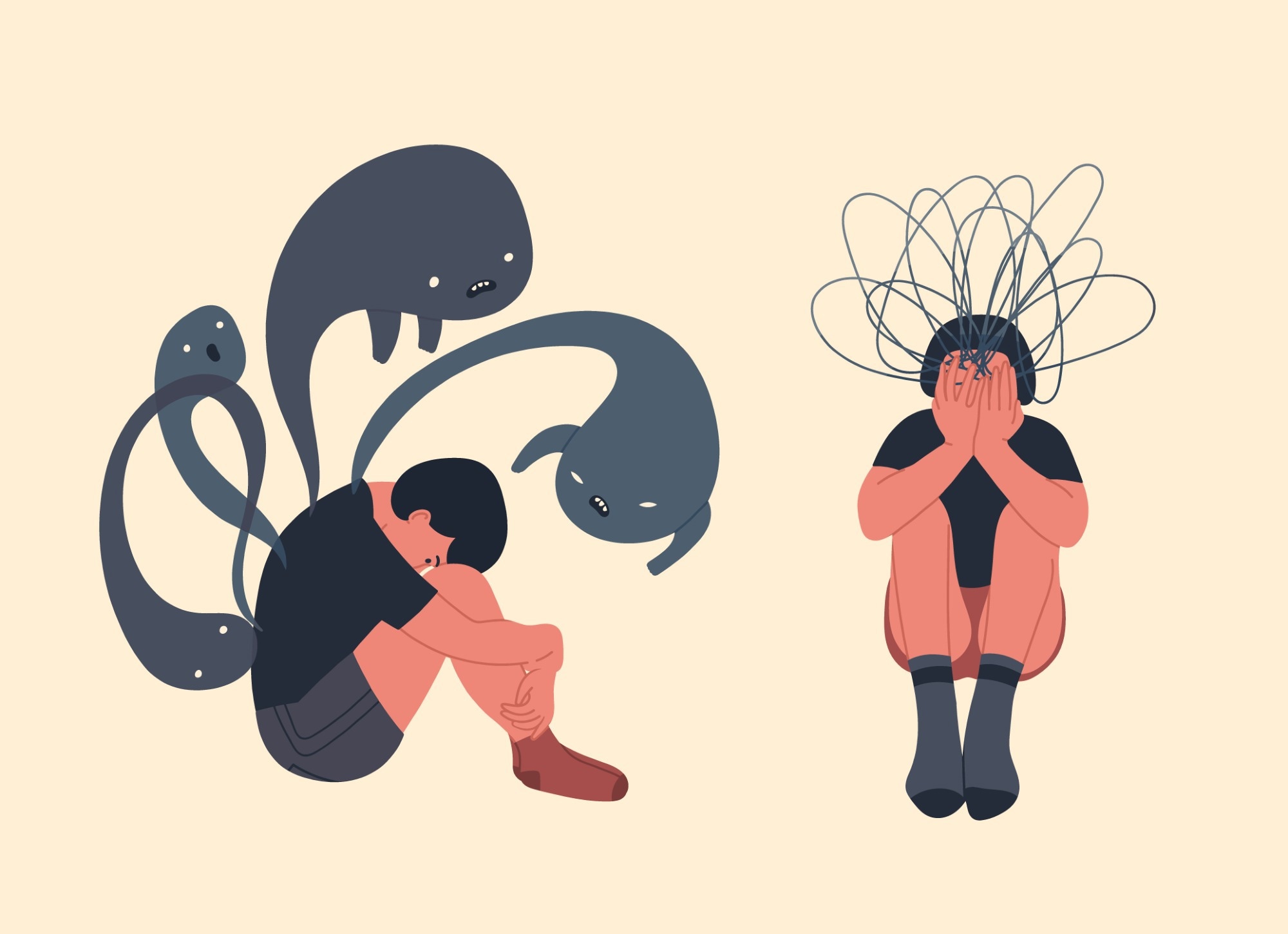In a recent study published in the journal Scientific Reports, a group of researchers investigated the influence of ketamine, a N-Methyl-D-Aspartate (NMDA) receptor antagonist, on mentalizing deficits and associated neural responses, providing insights into glutamate's role in schizophrenia's social cognition impairments.
 Study: Effects of NMDA-receptor blockade by ketamine on mentalizing and its neural correlates in humans: a randomized control trial. Image Credit: Bibadash / Shutterstock
Study: Effects of NMDA-receptor blockade by ketamine on mentalizing and its neural correlates in humans: a randomized control trial. Image Credit: Bibadash / Shutterstock
Background
Schizophrenia's social cognition deficits, especially in mentalizing, severely hinder societal interactions, correlating with irregular brain activity and remaining largely unmitigated by antipsychotics. The role of glutamatergic NMDA receptors in these deficits is undetermined despite ketamine studies indicating potential links. Although some improvements have been noted with atypical antipsychotics, overall, these deficits persist, with inconclusive evidence on antipsychotics' efficacy targeting dopamine-signaling. Instead, the glutamatergic NMDA receptor, essential in cognitive symptoms, becomes a focus. Studies utilizing NMDA-receptor antagonists like ketamine, known for creating narcotic and psychotomimetic effects, aim to understand schizophrenia-related glutamate signaling deficiencies. Despite ketamine's established impact on various cognitive functions, its effect on mentalizing remains unexplored. Further research is essential due to antipsychotics' limited efficacy and the uncharted territory regarding ketamine's effects on mentalizing in schizophrenia.
About the study
The University of Bonn initiated a study, recruiting 387 individuals through online platforms. The focus was on those who were right-handed, non-smokers, non-claustrophobic and had not used ketamine. Eligibility for the study, determined through questionnaires, on-site interviews, and drug and pregnancy tests, led to 85 qualified individuals, of whom 70 participants, with an average age of 24 years, engaged in the Magnetic Resonance Imaging (MRI)segment. Procedures ensured participant and staff blinding, with no notable demographic differences between those receiving ketamine or a placebo.
Ethical protocols were strictly followed, with the study's design being randomized and placebo-controlled. Participants, after fasting, underwent detailed briefings and medical checks before MRI scans. Monitoring continued throughout the session, ensuring safety, especially during ketamine administration via controlled infusion systems. Though most tolerated the procedure, a few experienced minor side effects, which were promptly managed.
The experimental task involved a modified Multidimensional Anxiety Scale for Children (MASC) task, evaluating social cognition through staged interactions in videos, followed by forced-choice questions probing participants' mentalizing capabilities. Post-session, Positive and Negative Syndrome Scale (PANSS) interviews assessed symptom severity, particularly relevant for understanding ketamine's psychotomimetic impacts.
Advanced imaging techniques captured detailed brain activity, with rigorous motion artifact controls excluding some participants. The remaining sample underwent comprehensive data analysis, focusing on brain responses during task segments and ketamine's influence on social cognition-related neural activity. Specific attention was paid to functional connectivity within key brain regions, employing sophisticated analysis methods and stringent statistical controls to validate findings. Despite some data limitations, the rigorous methodology aimed to provide valuable insights into ketamine's effects on human social cognition.
Study results
In the present study, researchers delved into the effects of ketamine on symptoms of schizophrenia and mentalizing, the ability to understand others' mental states. The study's participants, who were administered ketamine, exhibited significantly more schizophrenia-related symptoms than the control group across various factors, except for hostility symptoms. These factors included positive symptoms, cognitive disorganization, negative symptoms, and depression/anxiety symptoms, all showing statistically significant differences with p-values less than 0.001, except for depression/anxiety symptoms with a p-value of 0.001. However, correlations between mentalizing performance and PANSS subscales were not significantly associated with the ketamine group.
The experiment also revealed that participants made more errors in the social trials than in the physical ones of the modified MASC task, with those receiving ketamine making notably more errors than those in the placebo group. This result was significant, with a p-value of 0.019 for the difference in trial errors and 0.013 for the difference between groups. Despite these findings, the interaction between the trial type and participant group was not statistically significant, with a p-value of 0.34. An analysis of the types of answers chosen by participants showed that ketamine affected the pattern of responses, leading to an increase in "no mentalizing" responses, as indicated by a one-way Analysis of variance (ANOVA) with a p-value of 0.033.
In terms of neural correlates, the study expected social trials to induce Blood Oxygen Level Dependent (BOLD) signal increases in brain regions associated with social cognition compared to physical trials. The placebo group data showed activation changes in several areas, including the left posterior Superior Temporal Sulcus (pSTS), cuneus, middle occipital gyrus, precuneus, and right pSTS. These findings suggested an engagement of brain regions related with social cognition during social trials. However, when comparing the groups, a significant increase in the BOLD signal was found in the ketamine group in the right posterior superior temporal sulcus region, with a corrected p-value of 0.02.
Furthermore, the study discovered clusters of voxels that exhibited increased functional connectivity with the right pSTS in the placebo group, located in the left superior temporal gyrus and posterior cingulate gyrus. In contrast, the ketamine group showed higher connectivity in the anterior precuneus and left middle temporal gyrus but lower connectivity in the posterior precuneus and superior occipital gyrus. Notably, a t-test revealed a more significant difference in connectivity with the right pSTS between social and physical trials under ketamine compared to placebo, particularly in the anterior precuneus.
These complex findings highlight ketamine's multifaceted impact on neural processes and cognitive functions, particularly concerning schizophrenia symptoms and mentalizing abilities. The detailed numerical results and brain region activations provide a rich foundation for future research into the neurobiological mechanisms of ketamine and similar substances.